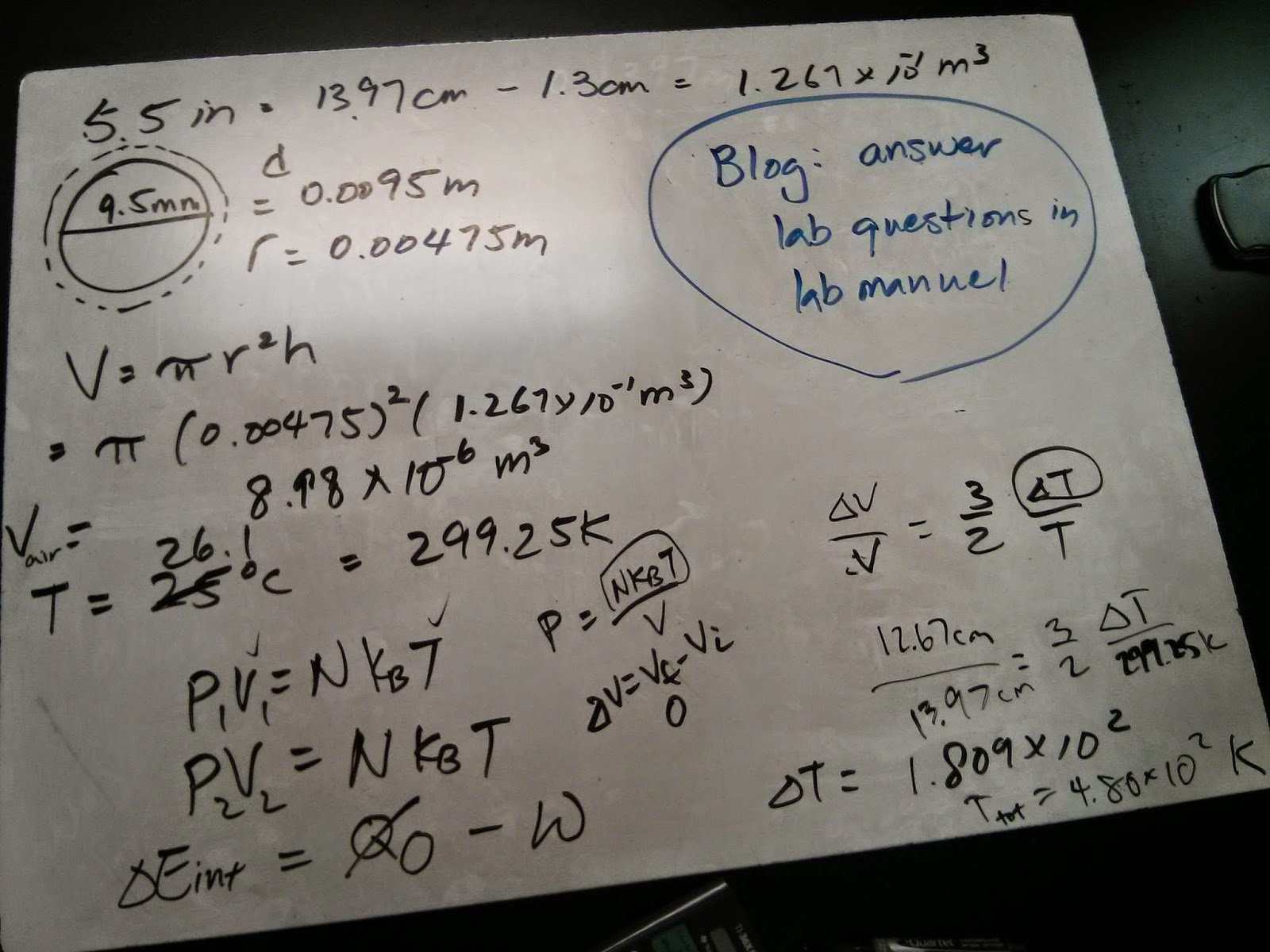The atomic level of the crystal lattice of a substance in solid state going through an increase of energy, therefore expanding the distance of the bonding between each atom.
An short explanation of the binding expansion. This also concurs with the prediction that the heated ring will have a greater radius.
Thermal expansion diagram and the dependent variables of the expansion.
Prof Mason demonstrating the expansion when the brass and Invar under goes thermal expansion.
The prediction concurs that the rod curves toward the Invar side because of the Invar has a higher coefficient of the expansion.
Prof Mason heading the rod on the brass side.
Prof Mason expose the rod into water and ice.
Black is the prediction of the heating Invar side. Green is the prediction of the heating brass side. Blue is the prediction of the rod going into ice water. All prediction were right!
The set up of aluminum rod with steam under going thermal expansion to the heat of the steam.
The aluminum rod going through thermal expansion when exposed to steam.
The actual board calculation of the thermal expansion of the rod. The angle of the sensor and the radius gives us the arc length of the sector. The sector is the expansion of the rod (delta)L. The calculated length from the experimental value is 19 x 10^-6 (C^-1)
**(The uncertainty of the length will be at the bottom of this page)
Graph of the ice water going through change of state and reaching boiling point. This picture was taken immediately when boiling point was reach. In the picture, the boiling point was actually 98 decree C, not the theoretical 100 decree C.
This picture was taking after certain amount of time after the heat was discontinued. The graph, however, was fitted by LoggerPro and displayed the slope of the line.
Calculation of the calorimetry; finding the mass needed for the change of the temperature.
Calculation of finding the "lucky" constant using Q = mc(delta)T; Also, a brief explanation of the error that involves with official lab report (systematic error and random error).
The 5 state of matters on the top of the board. A calculation of the change of state given energy. However, this energy (215kJ) never exceeded the 263860 J that's needed to completely melt the ice, therefore the T-final is 0 degree C.
Activity of the mass of water that can be poured onto the 255g of ice without the ice melting.
Here's Daniel blowing in air for the displacement of the water level.
By measuring the displacement of the water level, we can therefore find the total volume of the straw. Using the density of the water, we can find the total pressure of the air being blown into the straw by Daniel.
Propagating the uncertainty for the change of the length of the aluminum rod:
The uncertainty is 1.2x10^-5 (C^-1).
Which our final answer should be 19 x 10^-6 (C^-1) +/- 1.2x10^-5 (C^-1). The theoretical value were within the uncertainty of the experiment.




























































